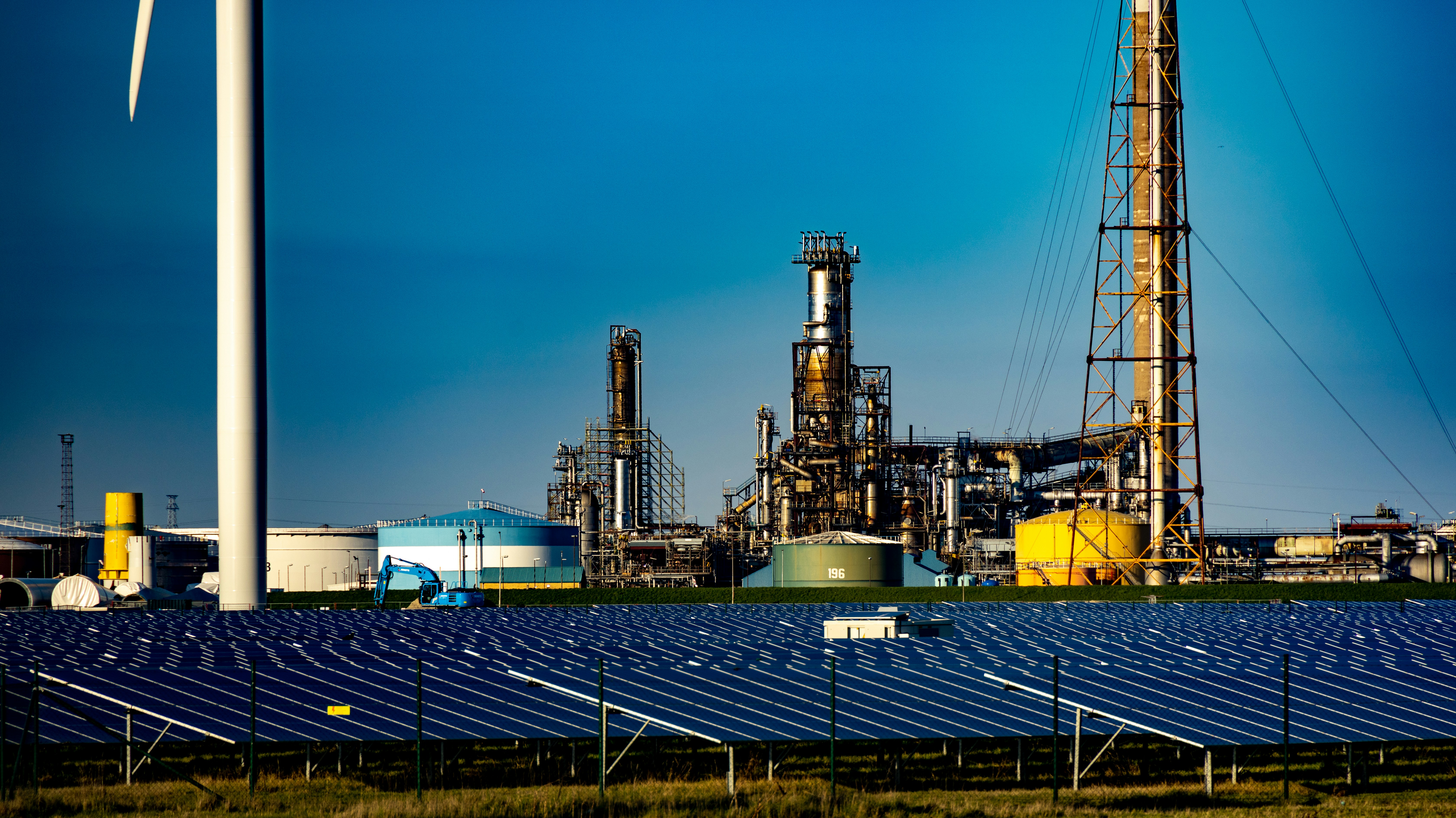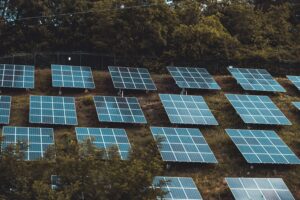
Understanding Green Energy
Green energy refers to energy derived from natural resources that are renewable and sustainable, with a minimal ecological impact. The primary forms of green energy include solar, wind, hydroelectric power, and biomass. Each of these sources harnesses environmental phenomena to generate energy that can significantly reduce reliance on fossil fuels, thereby contributing to a decrease in carbon emissions. Solar energy, for instance, captures sunlight through photovoltaic cells, while wind energy utilizes turbines to convert wind currents into electricity. Hydropower, on the other hand, generates energy through the flow of water, and biomass relies on organic materials for fuel production.
The environmental benefits of green energy are substantial. By transitioning to renewable energy sources, societies can reduce greenhouse gas emissions, which play a crucial role in climate change. The successful implementation of green energy techologies not only aids in combating global warming but also helps in enhancing air quality and preserving natural ecosystems. Thus, the push towards green energy is as much about ecological responsibility as it is about energy supply.
Economically, green energy presents numerous advantages, including the potential for job creation within the renewable sectors. As demand for green technologies increases, so too does the need for skilled labor, resulting in new employment opportunities across various levels of expertise. Moreover, renewable energy costs have been decreasing steadily, making it increasingly viable for consumers and businesses alike. Over time, energy derived from green sources can lead to lower electricity bills, further incentivizing this shift.
However, green energy is not without its challenges. The intermittency of energy generation—particularly concerning solar and wind—can pose reliability issues for energy systems. Additionally, the land-use implications associated with large-scale renewable projects and substantial initial capital investment can be barriers to widespread adoption. Despite these obstacles, the transition toward green energy remains a viable and necessary path for future sustainable development.
Exploring Nuclear Energy
Nuclear energy is a form of energy produced through the process of nuclear fission, which involves splitting the nuclei of heavy atoms, primarily uranium-235 or plutonium-239. This splitting releases a significant amount of heat, which is then used to convert water into steam. The steam drives turbines connected to generators, producing electricity. Nuclear power plants operate on this priniple, providing a substantial portion of the world’s electricity with relatively low carbon emissions during operation.
One of the major advantages of nuclear energy is its high energy density. Unlike fossil fuels, which require large quantities to produce energy, a small amount of nuclear fuel can generate vast amounts of electricity. This high output is particularly beneficial for baseload power generation, meaning nuclear energy can supply continuous, reliable energy regardless of weather conditions, unlike many renewable sources. Additionally, nuclear power produces minimal greenhouse gas emissions, making it a key player in efforts to combat climate change.
However, nuclear energy is not without its disadvantages. One of the most pressing concerns revolves around the management of radioactive waste, which can remain hazardous for thousands of years. The long-term storage of this waste requires meticulous planning and execution to prevent contamination of the environment. Furthermore, the safety of nuclear power plants has been brought into question due to historical accidents such as Chernobyl and Fukushima, which resulted in severe ecological and health impacts. These incidents highlight the potential risks involved in nuclear energy production, leading to public apprehension and opposition.
Lastly, the financial aspects of nuclear energy cannot be overlooked. The costs associated with building and decommissioning nuclear power plants are substantial, and such inveвtments can lead to economic debates regarding the best energy sources for the future. Overall, while nuclear energy offers compelling benefits, these must be carefully weighed against the significant risks and challenges it presents.
Comparing Environmental Impact
When evaluating the environmental impacts of green energy and nuclear energy, several factors come into play, including land use requirements, water consumption, waste generation, and lifecycle emissions. Each energy type presents unique advantages and disadvantages regarding its effects on the environment.
Green energy sources, such as solar, wind, and hydroelectric power, typically require substantial land for their installation. For instance, large solar farms and wind turbine arrays can occupy vast areas, potentially leading to habitat disruption. However, these renewable sources generally generate electricity without significant emissions, making them environmentally friendly alternatives. Their lifecycle emissions, which include production, installation, operation, and decommissioning phases, tend to be lower than those associated with fossil fuels, aligning with global goals for reducing greenhouse gas emissions.
Nuclear energy, on the other hand, has a much smaller land footprint compared to green energy installations. A nuclear power plant can generate a substantial amount of electricity from a relatively small area. Nevertheless, it involves considerable water usage for cooling processes, which can impact local water ecosystems. Additionally, one major environmental concernassociated with nuclear energy is the generation of radioactive waste, which remains hazardous for thousands of years and requires secure, long-term storage solutions.
Ultimately, both energy sources have noteworthy lifecycle emissions related to their construction, operation, and decommissioning. Nuclear energy boasts nearly zero direct carbon emissions during operation; however, the full extent of its environmental cost emerges during the extraction of uranium and energy production processes. In contrast, while green energy sources emit negligible carbon during operation, their production and land requirements can have ecological consequences that necessitate careful consideration.
Assessing the environmental impacts of green energy versus nuclear energy reveals a complex landscape, where both sources present distinct challenges and benefits. This comparative analysis underscores the importance of adopting a nuanced approach to selecting energy solutions that align with long-term sustainability objectives.
The Future of Energy: Green vs. Nuclear
As we navigate the complexities of energy production, the comparison between green energy and nuclear energy has gained significant attention. Both energy sources present unique opportunities and challenges that will shape the future landscape of energy generation. Green energy, primarily derived from renewable sources like solar, wind, and hydroelectric power, has made remarkable strides in recent years. Innovations in energy storage technologies, such as lithium-ion batteries and emerging solid-state options, are helping to tackle the intermittent nature of renewables, enabling reliable energy supply even during periods of low generation.
Conversely, nuclear energy has also evolved, particularly with the development of small modular reactors (SMRs). These advanced designs promise to enhance safety, reduce costs, and facilitate a more flexible deployment of nuclear technology. Offering a stable and low-carbon energy source, nuclear power can play a crucial role in complementing renewables, particularly as nations strive to reduce their carbon footprints and meet escalating energy demands. The inteаration of both energy sources could lead to a more resilient energy grid capable of accommodating variable energy production.
Policy implications surrounding energy production are critical for both green and nuclear sectors. Supportive governmental frameworks and investments in research and development are essential for accelerating the adoption of innovations, thus ensuring that these technologies can compete in the market. Public perception also plays a considerable role in determining the trajectory of each energy source. While green energy enjoys broad public support, nuclear energy often grapples with skepticism due to historical incidents and safety concerns.
Ultimately, a diverse energy mix is paramount for achieving energy security and sustainability goals. Balancing investments between green technologies and nuclear energy can provide a more stable energy future, ensuring that society meets its growing energy needs while addressing environmental concerns comprehensively. By fostering collaboration between these sectors, we can strive towards a sustainable energy landscape that benefits both current and future generations.


